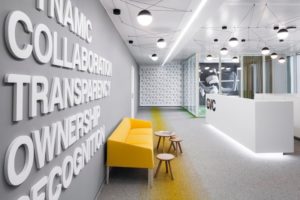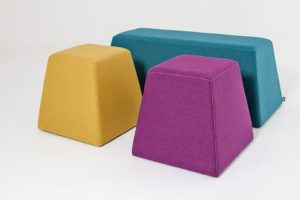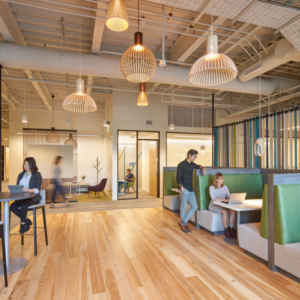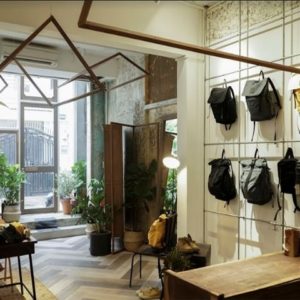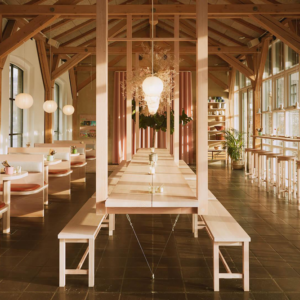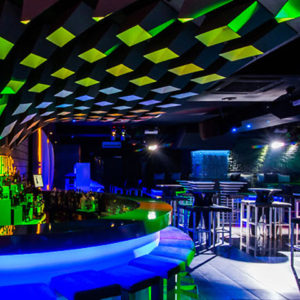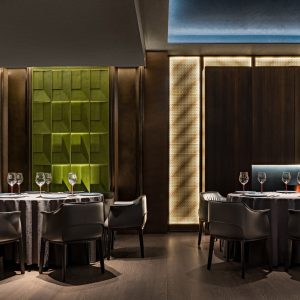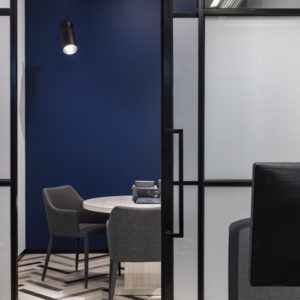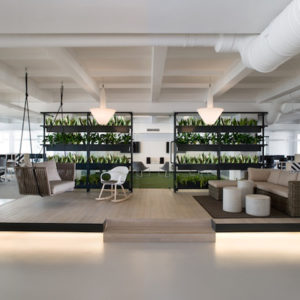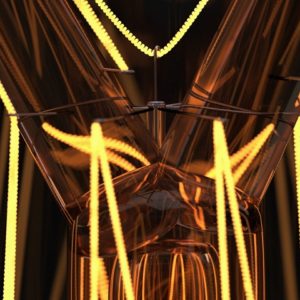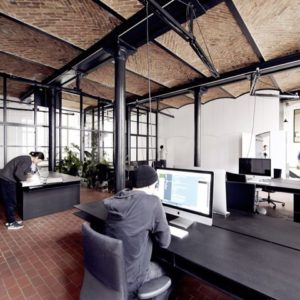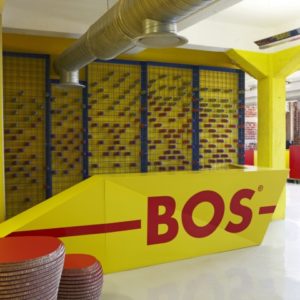
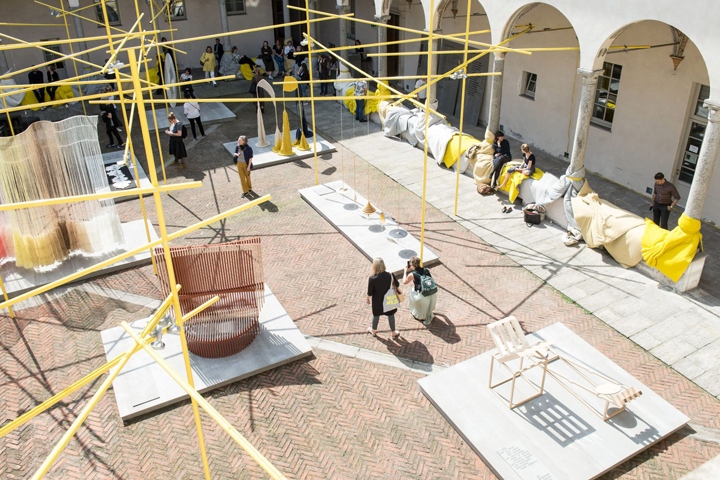

A framework of bright yellow poles and matching cushioned seating set the scene for the Mindcraft exhibition of Danish craft at this year’s Milan design week. Curator Ditte Hammerstrøm’s selection for the annual exhibition of Danish design focused on tactility, sensuality and hands-on engagement. Pieces she selected included shimmering knitted sculptures, a chair sculpture made of four cast pigment-dyed concrete blocks and ceramics coated in a boiled black-blue glaze.
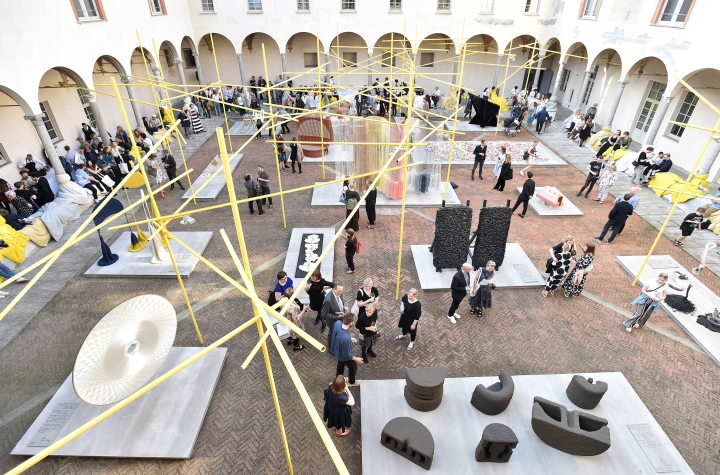
“I have sought to showcase the experimental scene, where Danish craft and design is quite strong today,” said Hammerstrøm. “To me, it is important to highlight the experimental and uncompromising qualities of design and craft and the constant exploration of new ways of addressing the material.” “These are essential qualities to preserve and safeguard in order to ensure the continuing development of the field,” she continued.
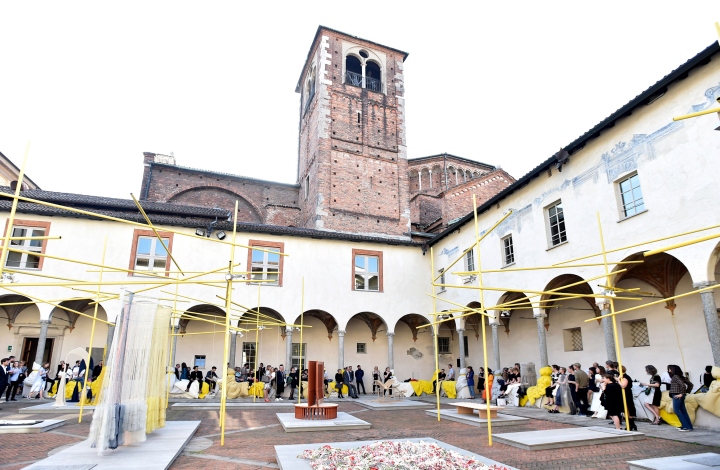
Works were arranged across the Chiostro Minore di San Simpliciano – a historic religious cloister in the city’s Brera district. Each was a framed by a tangled network of yellow metal poles. Extending the “hands-on” theme to the exhibition design, cushioned Kvadrat textiles were tied around the cloister’s collonaded perimeter to create comfortable make-shift seating.
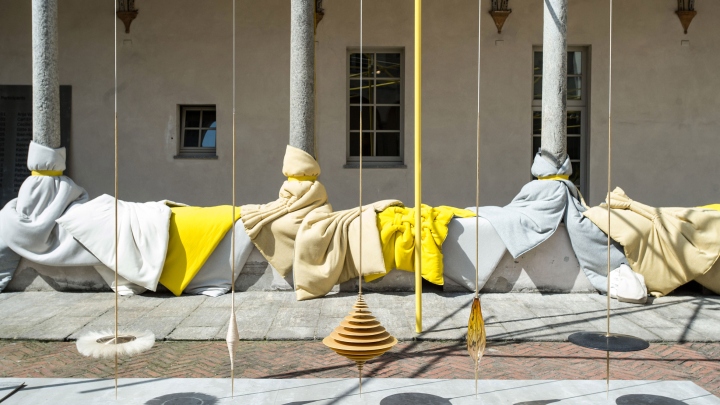
In a previous edition of Mindcraft, the Milanese cloister was covered with a mirrored floor by design studio GamFratesi. At the centre of the cloister was a suspended shimmering Knit sculpture by Iben Høj that moves in the breeze. The fabric is made up of extremely fine-gauge strands, including a fibre with glow-in-the-dark properties that is charged in daylight and subsequently emits light for a limited period of time.
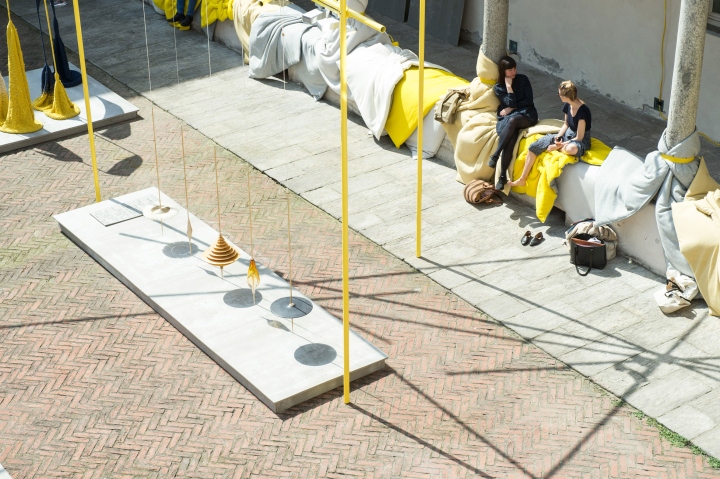
A wide bench by Rasmus Fenhann was made by glueing pieces of solid Oregon pine together. The three-dimensional pattern on its surface was created with a CNC milling machine and subsequently hand-finished with Japanese planers and profiled scrapers. To create Gitte Jungersen’s tactile All is Flux ceramic panels, different glazes were poured into a rectangle in four thick layers and kiln-fired at 1280 degrees Celsius. In the kiln the glaze melts, boils and bubbles up, transforming the texture and appearance of the material and blurring the edges of the rectangular shape. A sudden reduction in temperature freezes the form.
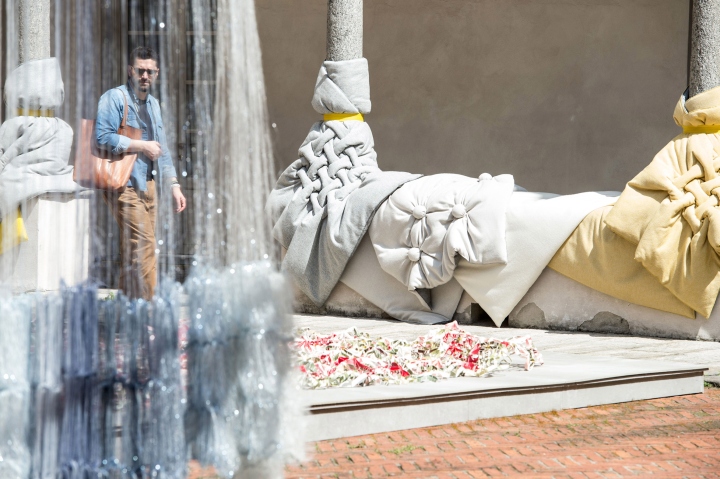
Designer Louise Campbell created a delicate handcrafted sculpture made up of lino-printed-paper flowers, while Pettersen & Hein designed the Lick My Ass chair from four cast pigment-dyed concrete blocks. The blocks are joined together with iron tubes and topped with a glass-blasted, anodised aluminium seat with hand-made indentations that create a textured surface. Cecilie Bendixen made a sound-absorbing Sun disc by weaving polyester thread around a laser-cut plywood ring, and Carl Emil Jacobsen formed his Half Psculpturesltures by hand-moulding fibre-reinforced concrete around a core made of polystyrene foam and steel – before painting it with grey-black pigments.
https://www.dezeen.com/2018/04/23/mindcraft-exhibition-milan-design-week-ditte-hammerstrom/





Add to collection
